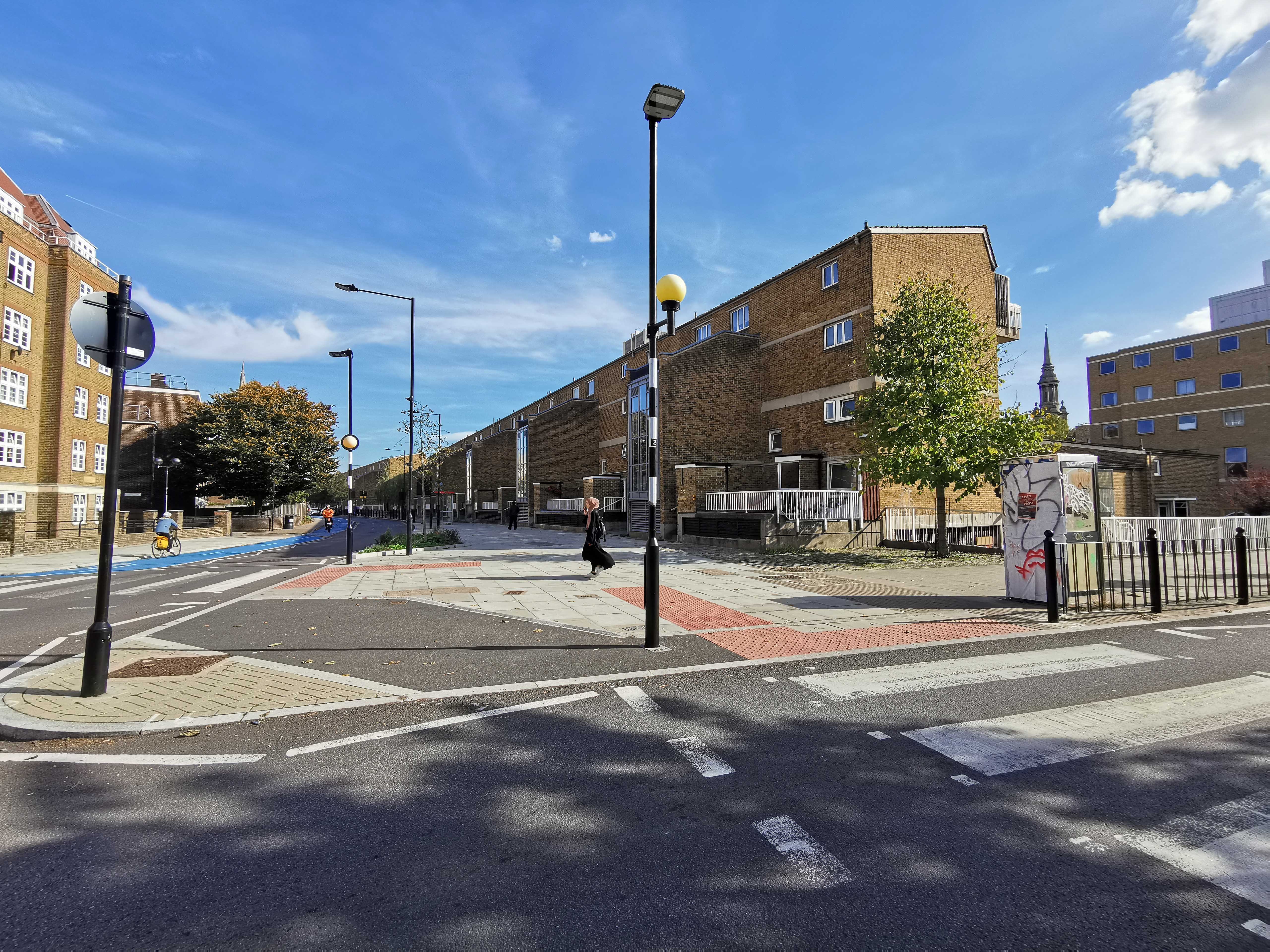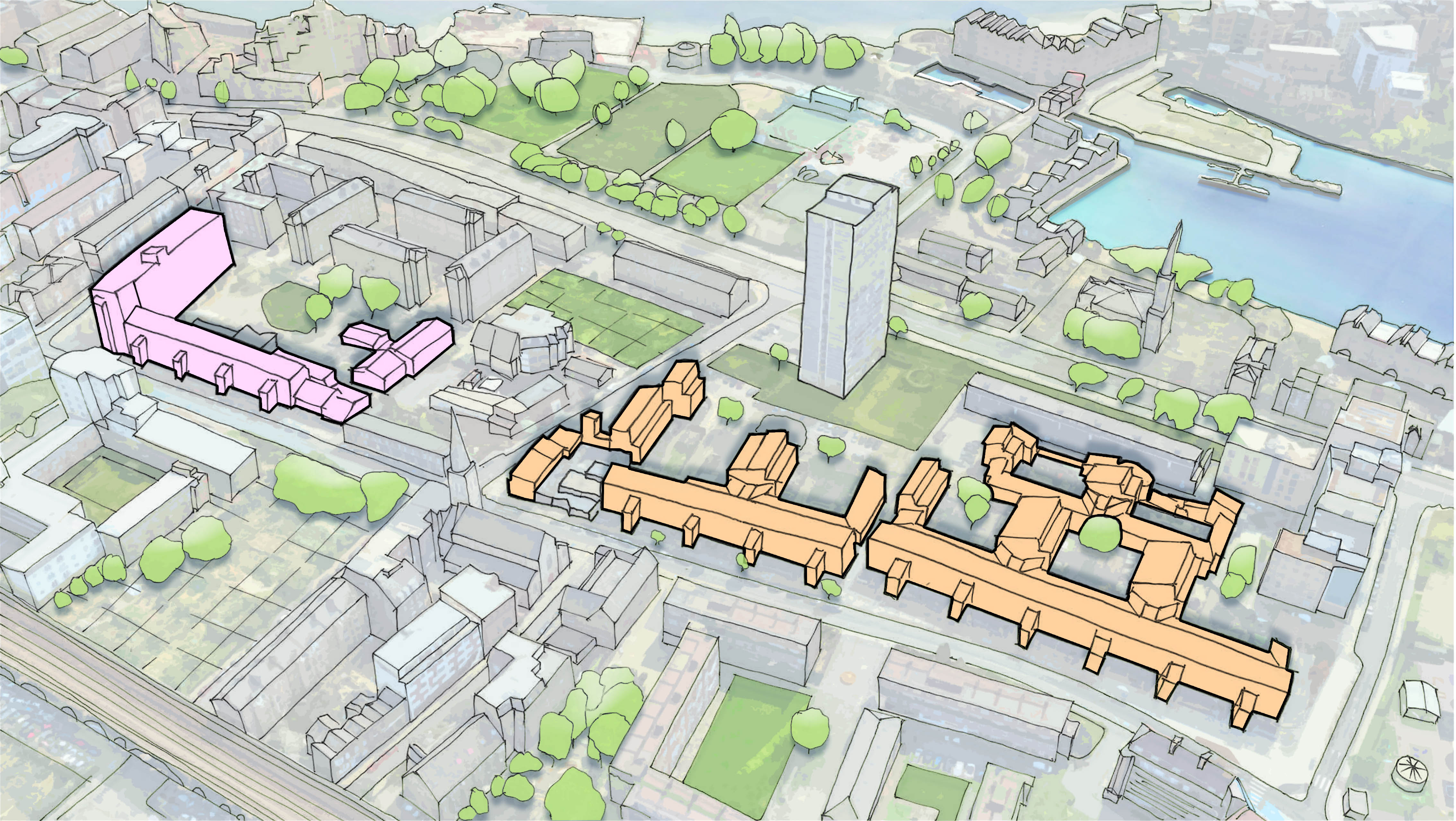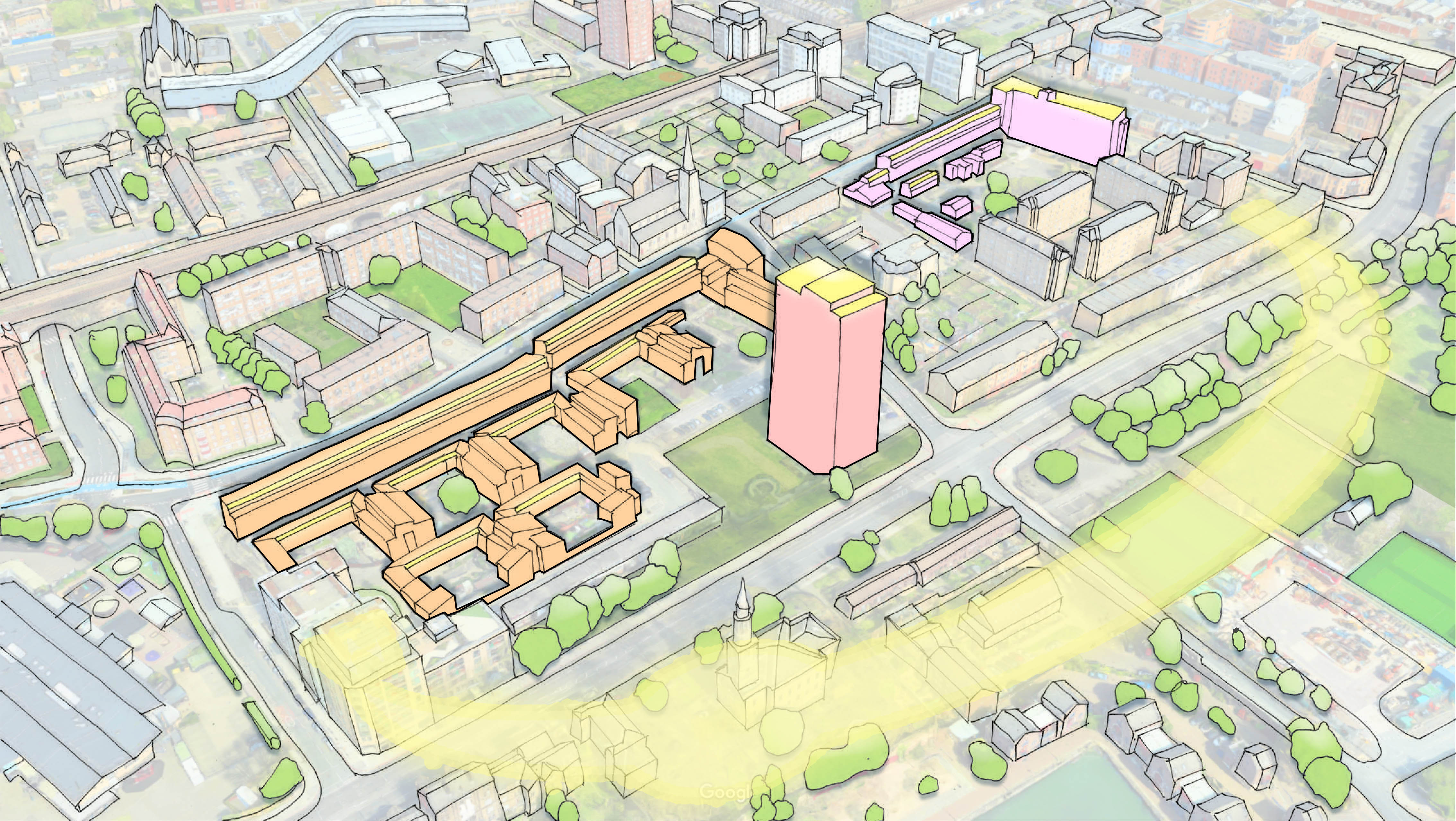Learn about Keegans role in the Glamis Estate decarbonisation project, focusing on energy efficiency improvements, emission reductions and heating system upgrades for EastEnd Homes.
See moreThank you for getting in touch. We will be in contact shortly.
The Glamis Estate was built in the 1970s, without insulation to the walls, roofs or floors. This was typical for the era but means that heat is lost very quickly through all parts of the blocks. The communal heating and hot water system has only limited controls in the boiler rooms and each dwelling. The water for heating, taps and showers is pumped round the system constantly, even when relatively little is being used. Heat is lost through the pipes as the water circulates around the estate.
The estate is not energy efficient, and big improvements are needed to bring energy usage of the estate down to a much lower level. The reduction in energy usage combined with changes to how heating and hot water are generated will result in significant reductions in carbon emissions. The upgrades and energy efficiency work will give all residents greater control over the heating of your flat or house, and put you in control of your heating and hot water bills.
Glamis Estate currently has a communal heating and hot water system (sometimes known as ‘district heating’), which means that hot water is generated in centralised boilers, and piped throughout the estate to each dwelling to supply radiators, taps and showers. Parts of the system date from the 1970s and are no longer energy efficient or cost effective. The system is also prone to leaks and breakdowns.
The proposals described here are for a phased system replacement over the next 2 years. The benefits of doing this are:

Heating, hot water upgrades
Thermal insulation upgrades
Heating, hot water and ventilation steps
Future Planned Works
Funding

Keegans’ Cost Consultancy team played a pivotal role in the project by conducting Improvement Option Evaluations (IOE). Keegans also advised on the procurement pathway to market to secure the most advantageous commercial offer. During this process, we advised our Clients on the following aspects of the procurement challenges.
Keegans’ approach to the IOE involved several key steps:
Keegans’ systematic and structured approach to Improvement Option Evaluation ensured that the Eastend Homes Decarbonisation project is efficient regarding Time, Cost and Quality. By carefully assessing the technical, financial, and environmental aspects of each option, Keegans and the stakeholders can make informed decisions that maximize the benefits of the retrofit project. This comprehensive evaluation process worked seamlessly alongside the Client’s Planned Maintenance programme to ensure no short-term decisions were taken and that the Client’s budget achieved the Client’s maximum objective.

People who worked on this project
Services you may be interested in
Effective cost management is a vital component in all building projects, from feasibility studies and cost estimates to budget control and final cost assessments.
Our employer's agent services combine the experience of our project managers, contract administrators and cost managers.
What is a Quantity Surveyor?
A Quantity Surveyor (QS) is a professional in the construction industry who specializes in construction costs and contracts. They are responsible for managing all aspects of the contractual and financial side of construction projects, including conducting financial feasibility studies, cost estimation, cost planning and management, analyzing terms and conditions in the contract, predicting potential risks in the project, forecasting the costs of different materials needed for the project, preparing tender documents, contracts, budgets and other documentation, taking note of changes made and adjusting the budget accordingly, tender management including preparation of bills of quantities, contract conditions and assembly of tender documents, contract management and contractual advice, valuation of construction work, claims and dispute management, lifecycle costing analysis, and reinstatement cost assessment for insurance purposes. A key part of the role will be to liaise with a range of other teams working on the project, helping it to stay on track.
What is Cost Consultancy?
The cost consultant provides estimates and advice regarding the cost of construction works. The cost consultant's role might include: Helping determine the client's requirements and undertaking feasibility studies. Benchmarking requirements against similar projects. Assessing and comparing options.
What is the role of an Employer's Agent?
The employer's agent administers the project on behalf of the client and acts as the lead consultant for the delivery of the project. The employer's agent fulfils the functions of the project manager and cost manager; they may appoint additional consultants to discharge certain roles. The role of the employer’s agent starts before the contract is awarded and continues through the construction phase to the post-completion defect rectification period.

07.10.2025
Takura is AssocRICS QualifiedCongratulations to Keegans Takura Mavera, who is now AssocRICS qualified with the Royal Institution of Chartered Surveyors!
Thank you for getting in touch. We will be in contact shortly.